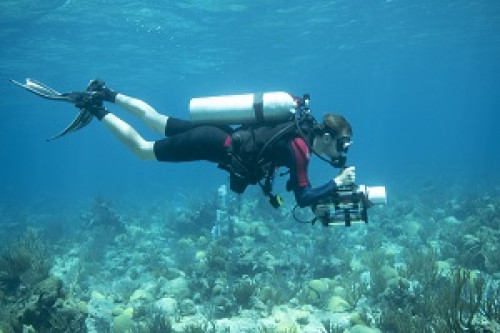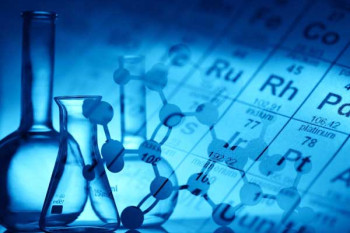© Pint of Science, 2024. All rights reserved.
Corals reefs are some of the most biodiverse ecosystems on planet Earth. While they might only cover 0.1% of the ocean, they account for around one quarter of all known marine species. However, like most of the natural world they are currently under threat from global challenges i.e. warming sea temperature as a result of climate change, pollution and overfishing. With these threats becoming ever more present, mass bleaching events are becoming more frequent, with the first described in 1984 and since then a further three global bleaching events have been recorded in 1998, 2010 and 2015/2016. The mass bleaching event of 2015-16 affected 75% of the 100 globally distributed survey locations.
Corals are animals that have a symbiotic (co-dependent) partnership with a group of photosynthetic algae collectively called Zooxanthellae (Zoox) or Symbiodiniaceae. The relationship is thus, the coral provides shelter, nutrients and carbon dioxide, and in return the Zoox photosynthesises (harnesses energy from sunlight) giving the products, sugar and oxygen, to the coral. In addition to this, Zoox and other pigments also give the coral the majority of its vibrant colour(s).
Most tropical hard coral communities also exhibit a natural fluorescence, similar to a glow in the dark effect. This glow comes from both the coral itself and its symbiotic partner. The reason for this is not yet known, although several studies have been conducted to try and derive meaning from this and have suggested many possibilities for the role that fluorescent proteins (FPs) play: including (i) acting as a sunscreen (ii) as a stress response or even (iii) to attract prey. What we do know for sure is that FPs are expelled and fluorescence is lost in injured or compromised coral tissue.
When corals undergo these threats or ‘stressors’, they bleach. Coral bleaching refers to the breakdown in this relationship between coral and Zoox. When the coral is under stress, the relationship is strained and it becomes a case of every man (or coral) for itself. The coral kicks the Zoox out in an attempt to increase its chance of survival. As the Zoox is what gives the coral its colour, the coral now appears white. Coral tissue itself is transparent, so without the Zoox colour the coral’s (calcium carbonate) skeleton underneath is exposed. Corals that appear white (bleached) have lost around 70% of their partner Zoox. This doesn’t mean the corals are dead; they are alive but vulnerable and on their ‘last legs’. To recover, these corals will need to adapt to the stressor, or survive until it decreases or ceases altogether.
Brain coral (diploria labyrinthiformis) fluorescing green under UV light
My research involves studying this loss in colour as the coral bleaches and attempting to detect the colour change more accurately than traditional systems can. By measuring specific colours (or wavelengths) that correspond to key pigments naturally occurring in the coral, namely green fluorescent proteins (GFP) 511nm (green) (not present in all corals but most common fluorescent colour) and chlorophyll 685nm (deep red)(present within zoox), we can monitor the change in strength or intensity of these light signals to estimate how ‘bleached’ or ‘healthy’ a coral is by comparing against a baseline of a healthy coral.
This is achieved using a device called a Hyperspectral camera. While most everyday cameras image in three bands or colours (Red Green Blue or RGB), a Hyperspectral camera scales this up and can image in hundreds of bands across the whole spectrum of visible light. The outcome of this is a camera that can very accurately image very slight changes in the amount of light and colour. Due to the high-tech nature of these cameras, they are highly expensive ranging from £12,000 to £120,000, which is not an insignificant amount of money and far out of the range of most marine research and conservation organisations budgets. Part of my project is to develop a low-cost hyperspectral camera that could be deployed underwater to image and monitor corals in their natural environment. We achieved this by using a special filter and a DSLR camera making a device that is around £5,000.
Over the course of my research we have bleached corals in laboratory conditions by using water temperature as the stressor and imaged them as the bleaching process takes place. We have found that by selecting key wavelengths (colours) associated with specific pigments (GFP) 511nm and chlorophyll 685nm[7], we can accurately monitor coral health beyond the 0-70% that can’t be seen by eye or traditional camera system. We aim to take this approach and use it to monitor live reefs, to generate rapid coral health assessments and a database of known reflectance/fluorescence signatures at various stages of bleaching for coral species.
About the Author
Jonny Teague is a 3rd year PhD student with the Interface Analysis Centre research group at the University of Bristol. Jonny is currently working on my PhD project on coral health detection using hyperspectral imaging and natural fluorescence. He is also a keen tinker-er of electronics/robots and an avid oogler of marine life. You can reach Jonny via Twitter @Jonny_teague.

Cover Image - Jonny field testing his handheld hyperspectral imager in Bermuda




